Definition: What is ‘omnichannel’?
Omnichannel refers to marketing, ecommerce and CX strategies that enable customers to have the same experience when dealing with a company, whether you communicate with them online, in-store or branch, on the phone, or anywhere else.
What is omnichannel experience design?
Omnichannel experience design is an approach to user experience that focuses on the overall quality of interaction between customer and brand, not just a specific kind of exchange on a single channel.
The nature of ‘omnichannel’ – as opposed to multi-channel marketing – means that the designer must develop an approach that covers every possible form of customer interaction and provides a holistic solution, rather than just covering the most common channels such as website and mobile site. Omni-Channel vs. Multi-Channel Experience
Free eBook: Reimagining omnichannel CX in the age of AI
Omnichannel vs. multichannel experience
The terms ‘omnichannel’ and ‘multichannel’ are sometimes used interchangeably, but they’re slightly different things.
- A multichannel experience works across more than one single channel, for example, phone and email.
- An omnichannel experience offers a seamless experience on every possible channel, so there’s never a ‘gap’ perceptible from the customer’s point of view.
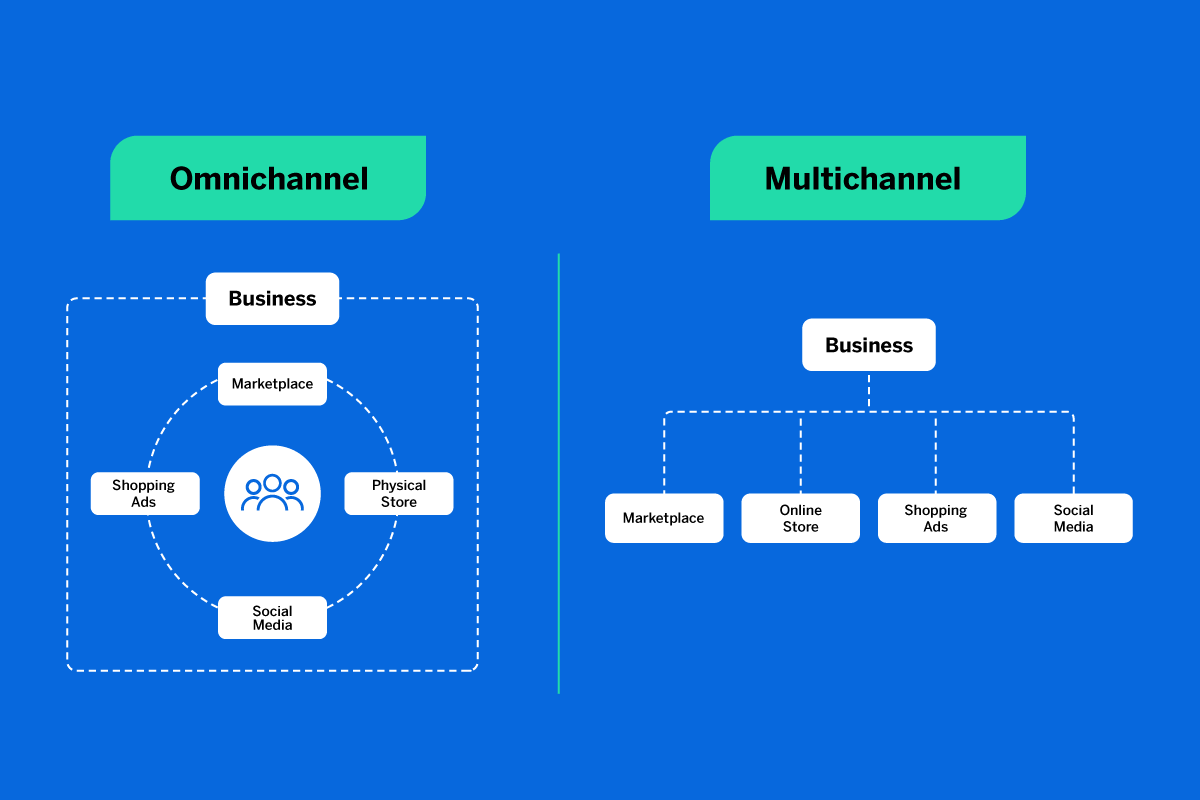
A multi-channel experience is like dealing with a team of people who, although they all work at the same place, may or may not know the details of each other’s tasks, and have different styles and personalities. Omnichannel experience is like dealing with one person who is great at their job and can take care of all your needs while you sit back and relax.
Why is omnichannel experience design important?
In 2022, ‘going online’ is a redundant phrase – we’re all online, all the time. The line between real-world and digital realms has all but disappeared. ‘Real life’ is digital, and digital is real life.
Take eCommerce, for example. A typical purchase journey works across multiple channels, offline and online.
We pick up a social notification about a deal on our smartphones during the morning commute, browse reviews on our desktop computers during lunch, ask questions of the brand chatbot via Facebook, and finally place an order from our laptops when we get home in the evening.
Although the purchase happens on a single channel, it’s not unusual for the customer journey leading to that point to include shopping online, an in-store visit, mobile apps, live chat, and more.
This omnichannel pattern doesn’t just affect businesses that have incorporated digital channels into a traditional retail model. We’re also seeing a breaking down of barriers in the other direction, with digital-to-physical transitions among online retailers. As well as pop-up shops and physical sales at shows and events, digital-first retailers might set up a physical store where customers can see, try and purchase goods like homewares, clothing, and cosmetics.
Omnichannel commerce designers focus on creating customer journeys that reflect this fluidity between different online and offline channels and provide a seamless experience for the end-user regardless of where and how they make contact with a business or organisation. It’s a practice that’s wholly user-focused since the user is the only consistent factor in the scope of a project.
Do customers expect omnichannel?
The integration of digital technology into everyday life is now at a point where omnichannel user experiences are the norm. Users expect brands to provide an omnichannel experience, and their behaviour reflects this.
66% of customers prefer to choose their journey through a brand’s channels when completing a task, and those customer journeys are rarely linear. A basic eCommerce transaction includes an average of 5.5 touchpoints but can rack up as many as 20 as the customer compares, considers, and explores the factors relating to a purchase decision.
In our 2021 Consumer trends report, we revealed that while some 44% of people would want to open a bank account in-store, 39% also want to be able to deal with that account wholly online. And that kind of experience is only growing in demand across industries.
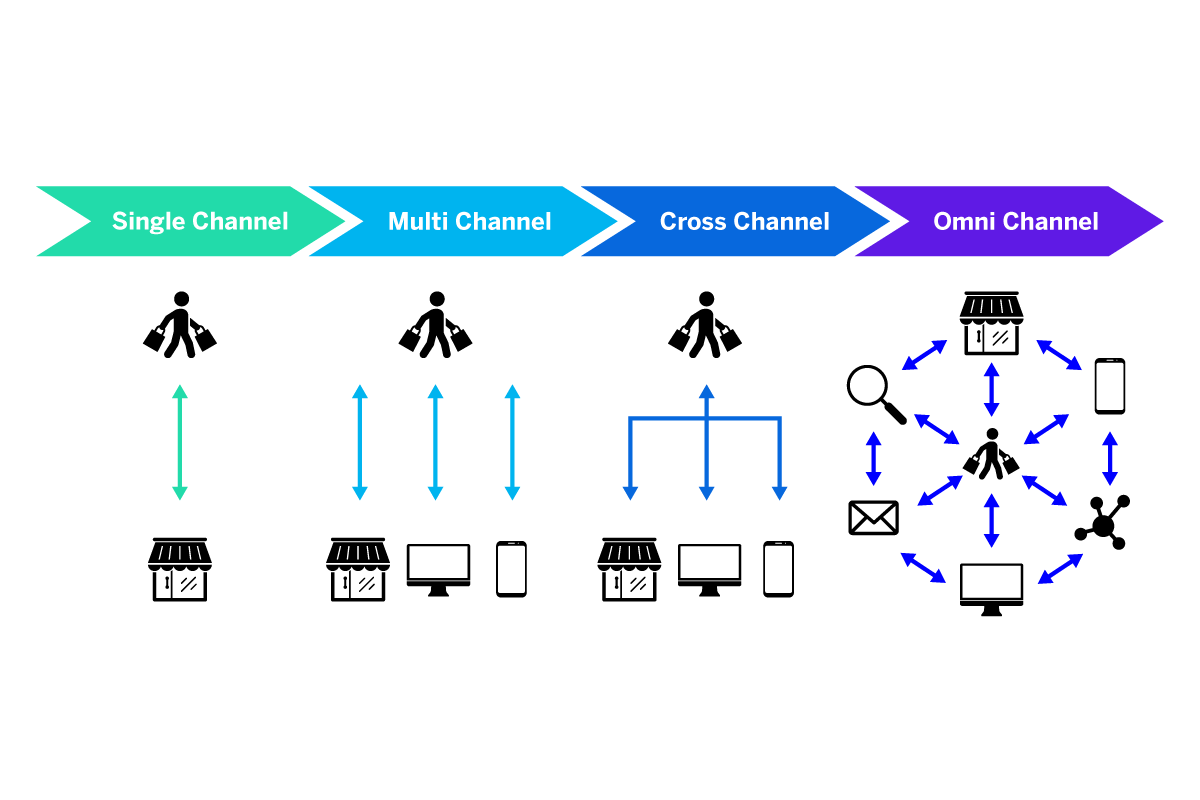
These stats tell us that customers are behaving in ways that make distinctions between channels almost obsolete, and it follows that they’ll expect companies to do the same. The kicker? Consumers say they’re willing to pay up to 16% more for a great customer experience.
The typical buying journey is now exploratory, unstructured, and led by the user. Rather than moving – or being driven – down a sales funnel, people expect to be able to create their own journeys to purchase in whatever way suits them, fitting around their daily tasks and bringing in third-party content like product reviews as needed.
Benefits of building omnichannel
Here are 5 reasons to move towards an omnichannel model.
1. Happy, loyal customers
From a customer’s perspective, the benefits of omnichannel are self-evident.
Dealing with a company across multiple channels is smoother, simpler, and more intuitive. The customer doesn’t have to take responsibility for finding the right person to talk to or retaining and repeating information about their previous dealings with the company.
Omnichannel means fewer hoops to jump through along the customer journey, and the business does the work for them. That, in turn, will boost customer loyalty. In fact, a Harvard Business Review study suggests that omnichannel customers spend more – those who use more than one sales channel spend 4% more in-store, and 10% more online.
2. Save time and money
For businesses, the smooth efficiency of an omnichannel strategy immediately delivers a return on investment by saving money and cutting down on time and resources associated with a less joined-up approach.
3. A better view of the customer journey
An omnichannel strategy gives you a bird’s-eye view of your customer’s journey, however, they choose to interact with you. With more and more ways to get in touch, customers are choosing their own journeys and the points of success or failure – what made them decide to purchase, or where their interest dropped – are harder to pinpoint.
An omnichannel approach puts everything inside a single system that’s visible and trackable, so you can gather insights and take granular action to improve aspects of your business as required.
4. A stronger brand
Over time, a powerful and lasting benefit develops from omnichannel commerce – a stronger brand. Happy customers are more likely to develop brand loyalty and recommend the business to others. That means repeat sales, a preference for you over your competitors (even if the products or services are comparable), and a perception of trustworthiness and quality.
5. Better employee experiences
Meanwhile, employees have better experiences at work and feel more empowered in their jobs, because they’re working within a system based on multiple channels that are robust, flexible, and effective. They’re easier to retain and more likely to be engaged, which means their contribution to your business is richer.
What is Omnimchannel marketing?
As one vertical of an omnichannel design, omnichannel marketing is really just the utilisation of the omnichannel approach to direct customers down the sales funnel with a consistency in approach across all your digital channels.
That means marketing materials on multiple channels that work together as part of a strategy, rather than simply as isolated efforts. Working with an omnichannel marketing approach is one way to ensure a consistent brand experience.
Omnichannel commerce: What does it mean in retail?
If omnichannel marketing is about convincing people to buy, omnichannel commerce is about ensuring that the in-store experience (in a physical store) is the same as the online one. Let’s say you bought a new laptop in a brick and mortar store called TOPLAPS, part of a national chain.
If there’s an omnichannel experience in place, the TOPLAPS Twitter account handler should be able to locate the details of your order and help you with a customer service query about your machine 6 months later, with minimal delay.
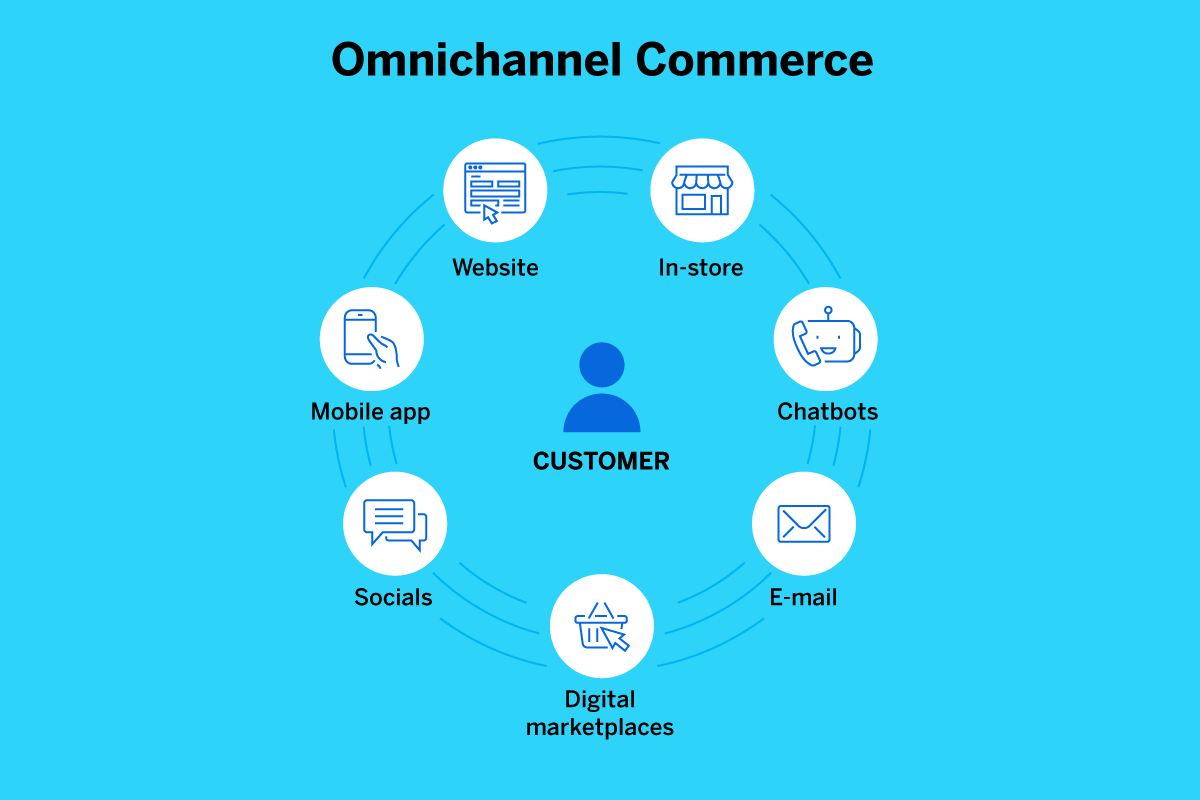
Without the strategy in place – with a single channel approach – you may need to contact the original brick and mortar store or the manufacturer of the laptop, or produce paperwork and receipts before your problem can be solved – all pain points that will negatively affect customer loyalty.
Or, to try another example, you’re browsing clothing in-store and see a shirt you love, but it’s not in stock in your size. If the brand uses an omnichannel strategy, you will be able to turn to online shopping – to open the store’s app or website on your smartphone and check the availability of the shirt online or at another branch. Without that investment from the brand, you’ll have to search other stores, ask a store assistant to re-order the item, or more likely, just sigh and walk away.
Truly omnichannel retail and customer experience are seamless, whether a customer is shopping online, speaking to you on social media platforms, visiting your brick and mortar stores, or speaking to a CX agent on the phone.
And that’s exactly what Qualtrics offers with its XM platform: a full, omnichannel way to make your customers feel heard and understood, regardless of touchpoint.
Free eBook: Reimagining omnichannel CX in the age of AI
Omnichannel benefits that scale
Omnichannel marketing, retail, and customer experience come into its own where there’s a complex customer journey that happens over an extended period.
Here, an omnichannel commerce setup joins the dots, taking the weight off manual clerical processes that would otherwise be subject to human error and creating extra effort for employees.
A mortgage application is a great example. A typical mortgage journey might include:
- Reviewing and comparing products online
- Using a mortgage calculator
- Visiting a branch to speak to a representative
- Applying online
- Receiving a decision in principle via email
- Sending and receiving documents by post
Coordinating a single customer journey across these touchpoints would require a lot of effort, and be error-prone when it is done manually. Worse, the work often falls to the customer as they are the single point of commonality across the process. They may find themselves explaining the steps they’ve been through already, providing printouts or copies of documents, and being passed from one person to another in a highly siloed organisation.
Having such disparate online and offline channels also leaves you in the dark about the components of the journey and how each one is performing. Did the online calculator crash the customer’s browser? Was the branch environment warm and welcoming, and did the appointment answer all their questions? What about the online application process? Did it feel like part of the brand or more like a bolted-on third-party system?
You may have teams collecting feedback and working towards KPIs on their sections of the journey, but without a joined-up overview, it’s nearly impossible to find out where a positive or negative experience originated, or how it could have been prevented.
How can you develop an omnichannel approach?
The principle of an omnichannel experience is clear – it’s a joined-up and user-centred customer experience that reflects the need for free movement between communication and marketing channels. But how do you create it? What does an omnichannel marketing strategy look like? And how does the back-end system of an omnichannel commerce solution use each sales channel?
Every business has its own approach to omnichannel experience design. But there are a few common factors that are generally present, and which will help you lay the foundation for an omnichannel approach, one where you can easily add more channels and expand on features to meet growing user expectations-and business needs.
1. Identify and break up silos
Siloed organisational structures, where departments are self-contained and activities and budgets are opaque to all but the top tier of leadership, are actively unhelpful for businesses who want to adopt an omnichannel mindset. Breaking down silos is a whole topic in itself, and requires a significant degree of change to both culture and processes. But there are some relatively quick ways to begin, one being to assemble teams from across multiple departments to work on specific omnichannel projects.
For example, you may decide to capitalise on the growing popularity of branded apps to engage existing customers and assemble a team of developers, UX professionals, designers, data specialists, and customer experience experts to get the job done. With a successful project under their belt, this team can not only undertake future projects but can play a role in internal marketing and awareness-building that will support cultural change.
2. Design for users, not channels
All marketing and communication channels must be built, developed, and optimised around maintaining a seamless sense of connection for the customer. The teams behind each channel should view their projects as part of a broader customer experience ecosystem and have an open and ongoing dialogue with each other around how channels support a typical channel-hopping user journey.
UX specialists have an important connecting role to play in the omnichannel journey, and their user testing activities need to be inclusive of all channels. They can report not only on the usability and functionality of a single feature, but on how easy it is for a user to move between channels and back again, and whether any friction or disconnect is perceived when they do so.
3. Integrate around a centralised system
The ‘omni-ness’ of an omnichannel experience is often achieved by centralising customer data in a single place, such as a CRM or CEM system. The functional features of the system, its accessibility to internal users, and its capacity to store data from different channels all hugely influence how easy it is to provide an omnichannel experience and set one up in the first place.
A powerful CRM system means that data provided by customers can be accessed by every part of the business that needs to see it, allowing continuous joined-up service to be provided whether the customer messages via online channels, call you, or walks into physical stores. They have the sense of communicating with a single entity no matter whom they speak to or how they get in touch.
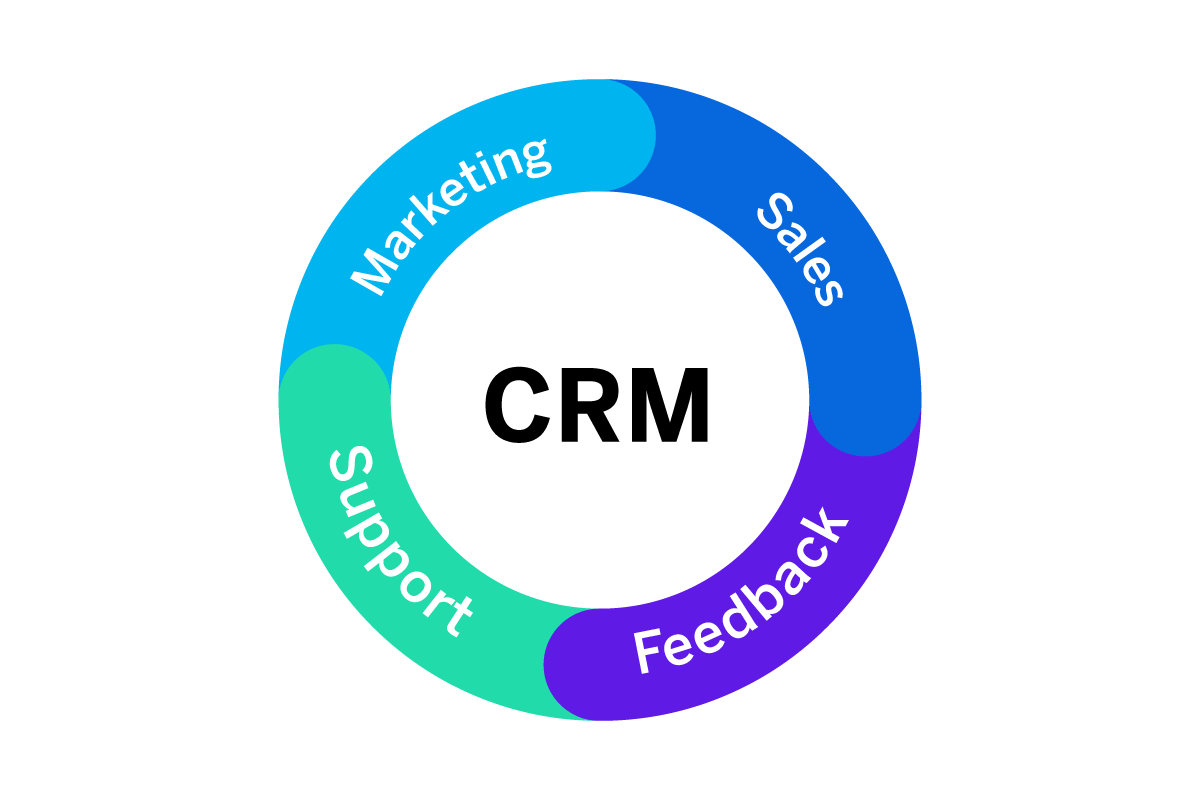
Another valuable asset is a system that collates customer feedback from all points across the omnichannel journey and allows you to collectively process and analyse them, even if they’re provided in different formats (e.g. numerical ranking, free text in natural language, or multiple choice selection).
A unified feedback system helps you see a holistic picture of the customer experience with all channels and touchpoints factored in. But knowing is only part of the story – you must also be able to take action.
As well as helping you develop insights and reach conclusions about what’s happening for your customers, your omnichannel system should make it easy to determine the best course to take and empower you to make interventions quickly and decisively. This could take the form of identifying the key drivers behind certain behaviours so you can prioritise your actions, or sending alerts to the right people at the right time for prompt action.
A strong, versatile experience management system not only helps you prioritise your work when you begin building an omnichannel platform, but it also continues to deliver insights and support actions over time, enabling you to keep pace with customer expectations and industry standards as they evolve.
4. Standardise measurements
You need a common currency to successfully measure and track customers across their journeys. Unless you’re able to compare like with like, you won’t know if one part of the system is performing better or worse than another, or what language to use to set business-wide goals.
Bear in mind that some of the most useful data for improving experiences is qualitative, deriving from sources like online reviews and social media. Look for a platform that can collect and interpret experiential data in an actionable way.
5. Take a journey-level approach
Working on a journey-first basis is another way of saying ‘start from the customer’s point of view.’ Rather than dividing goals and projects according to organisational silos, a journey-level approach groups together elements that form part of a single customer’s experience.
For most businesses, there are a few common types of journey, such as onboarding (becoming a new customer, setting up a savings account, taking out a policy), using (operating a mobile device, driving a car, playing games on a console) and renewal (re-subscribing to a service, renewing insurance cover). It’s also a good idea to include the broader context – why a customer came to you, and where they’ll go next.
6. Apply analytics to the entire dataset
Advanced analytical tools like DriverIQ and StatsIQ can help you examine data collected across an entire customer journey, and pinpoint the likely causes of positive and negative outcomes.
Omnichannel examples: Brands getting it right
Who’s nailing omnichannel commerce, and what lessons can we learn from their success?
Amazon

Amazon is one of those companies that seems to have the near-infinite reach, so it’s no surprise that they’re masters of an omnichannel strategy, even without brick and mortar stores. A big part of their success is the use of customer data, an area where they’ve always been at the leading edge. It’s used to provide personalised recommendations, serve relevant promotions and allow customers to review and re-order simply and quickly.
Amazon customers can also use the same account in different countries and across various sub-brands like Audible and Goodreads. Whatever you buy on Amazon.com, there’s a single, clearly explained returns process. Even the delivery experience is specifically Amazon, with branded packaging and ‘sorry you were out’ cards, even when it’s fulfilled by third-party couriers.
Perhaps most impressively of all, Amazon’s ecosystem manages to include third-party marketplace sellers who communicate with customers via Amazon’s channels, providing a consistent brand experience by extending Amazon’s benefits and values to these tertiary sellers. All without a physical store in site.
What you can learn:
Omnichannel retail is about smooth experiences, but that doesn’t mean glossing over and obfuscating the way things work so that different parts of the system are invisible to the customer.
Amazon’s ability to work smoothly rests on the clarity of its communication about which rules apply and its ability to set expectations. For example, Amazon Prime customers receive free shipping on items bearing the Prime logo, while regular customers don’t. And third-party sellers are identified clearly with a profile page and their own review scores so that the customer can make an informed choice.
Uber
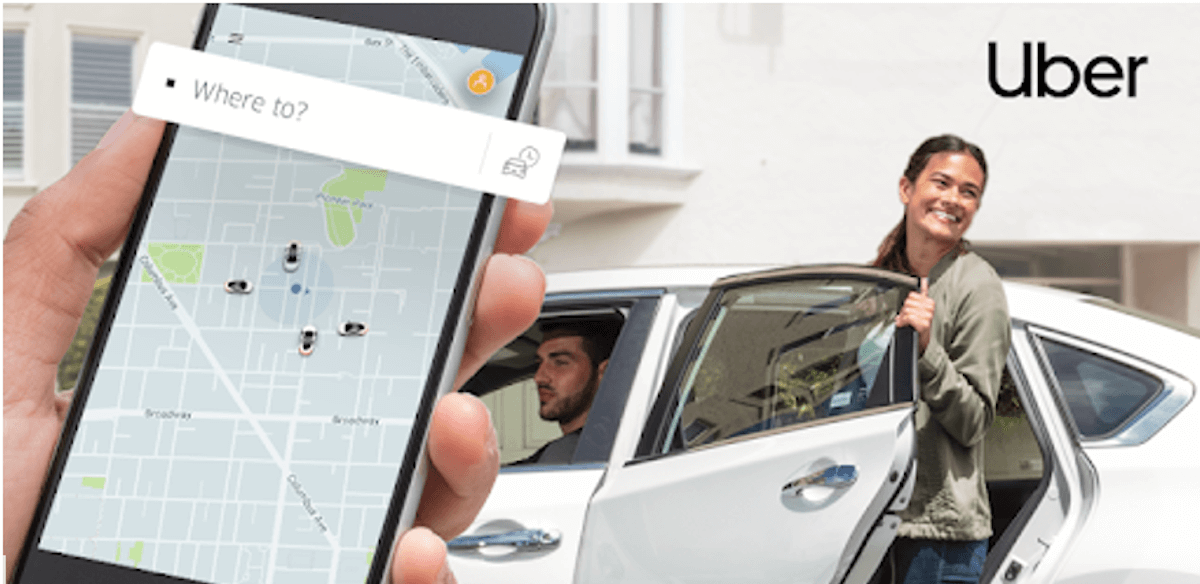
At first glance, Uber doesn’t seem a likely candidate for omnichannel excellence. After all, it just exists as an app, not physical stores or even really a website. But the company has excelled in uniting two channels that rarely mix well, and doing it with a seamlessness that’s so perfect you barely notice how great it is.
Uber uses technology to integrate real-world interactions with digital ones, combining them to eliminate the limitations and points of friction in traditional taxi-taking. Knowing whether a ride is nearby, how much it will cost and where to hail one are all taken care of. From the driver’s perspective, there’s a map and navigation instantly available, and even a passenger rating that helps sift out problematic customers. Payment happens automatically, and there’s no fumbling with change or issuing receipts.
The app-taxi symbiosis improves the experience by removing unknowns – passenger and driver have clarity on names, license plates, and each other’s previous journeys, so there’s an instant sense of familiarity and ease. There’s also total transparency about the route taken and the cost breakdown.
What you can learn:
You don’t need a vast network of channels and complex customer journeys to make an omnichannel strategy worth doing. Even with a small and relatively straightforward set of touchpoints, there’s immense value in having complete integration and visibility – not least because it helps you measure, refine and improve the service you offer.
Omnichannel = being understood
Whether it’s omnichannel marketing, omnichannel retail or the various stages all along the customer journey, the main benefit is that customers have one very human need satisfied: being heard and and being understood. Get that right – offer that seamless experience – and you’ll boost customer satisfaction and customer loyalty.
At Qualtrics, we can capture the full range of customer and employee experience data across a wide range of touchpoints and journey stages – as a means of market research, during the marketing phase, at the point of sale, service, complaints management, service recovery, and more.
We support a huge range of engagement modalities – via the web, in application post-call, post-retail experience, post-chat, etc. – to meet the customer where they are, in the medium most likely to elicit a response, and drive a positive outcome.
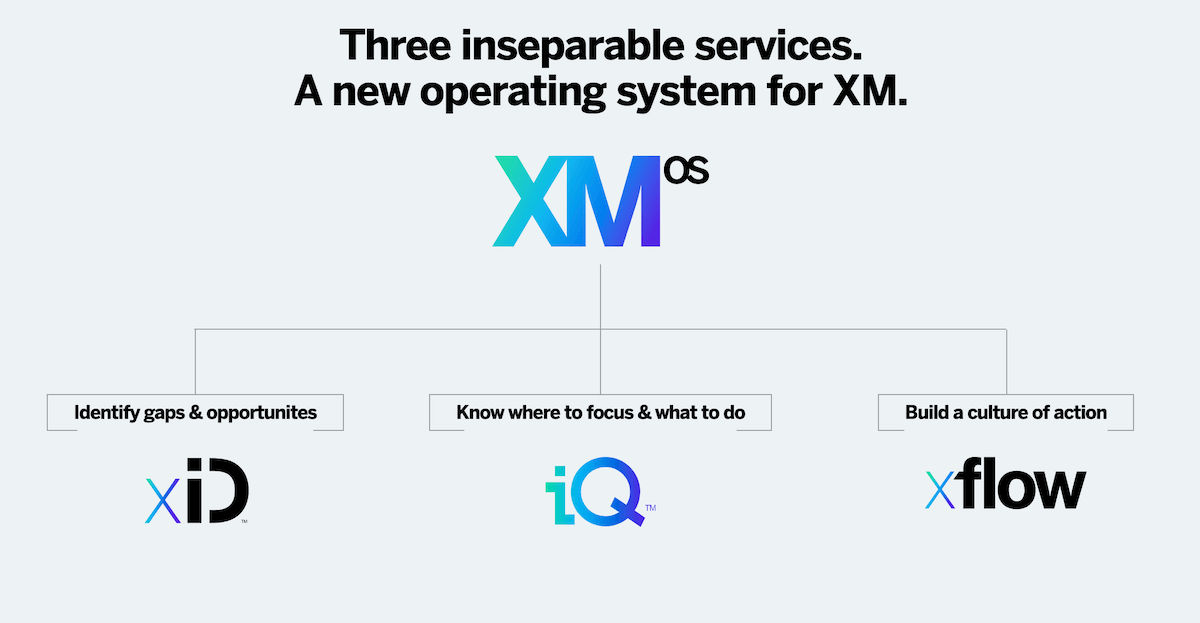
Our Experience Management platform is powered by next-generation natural language processing and AI-powered real-time data to fully map customer journeys, find pain points, and provide actions.
That’s what omnichannel really means: hearing the customer wherever they are and making them feel heard, valued, and understood.
Free eBook: Reimagining omnichannel CX in the age of AI